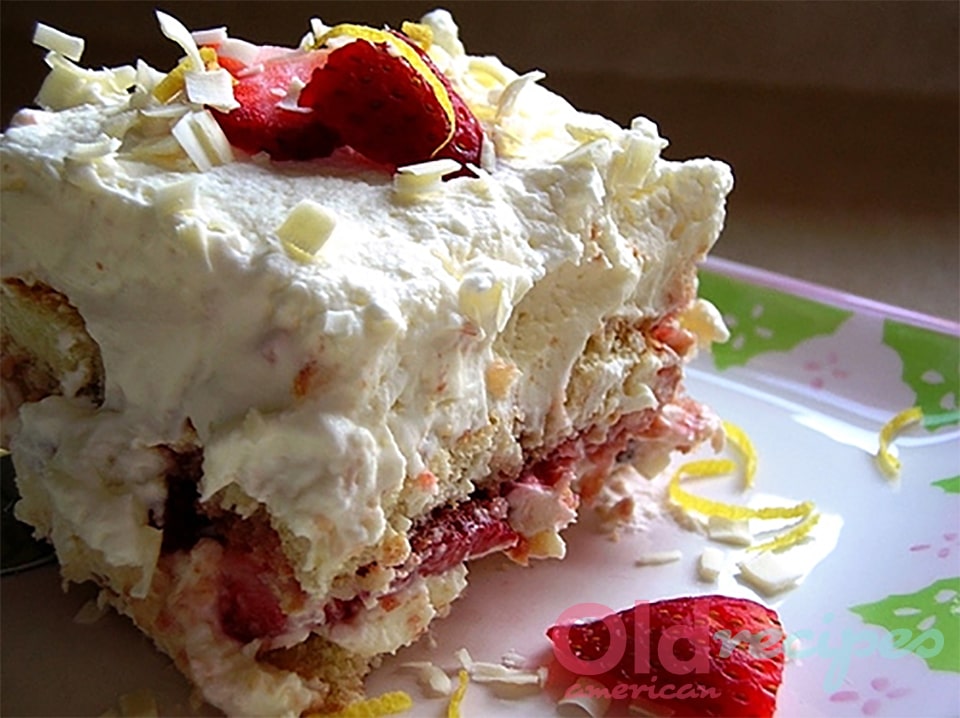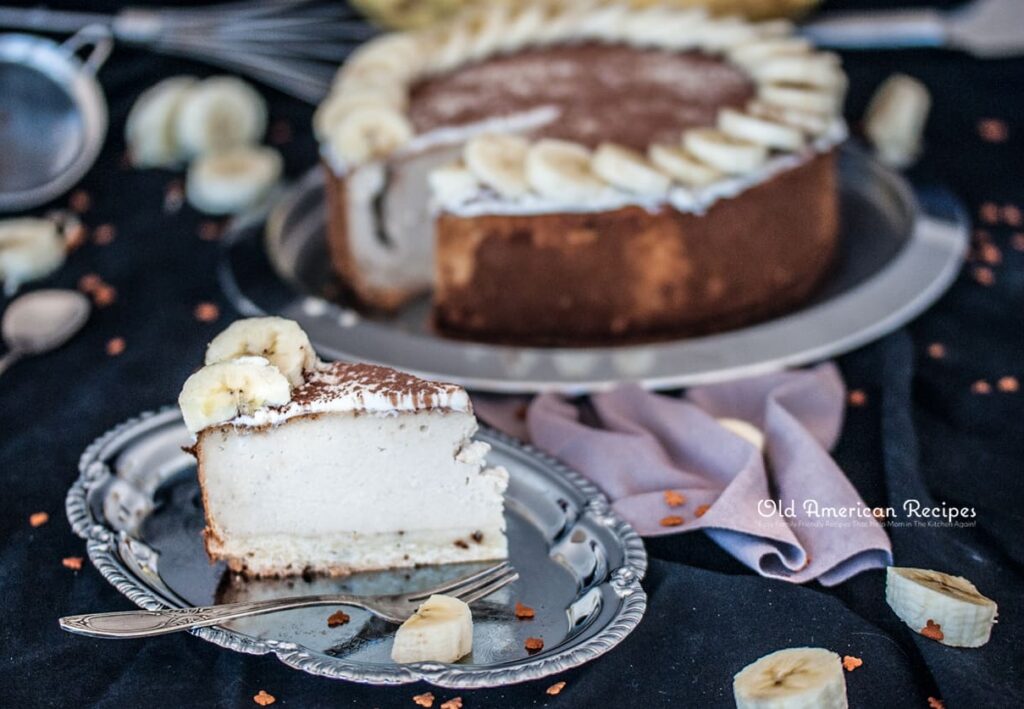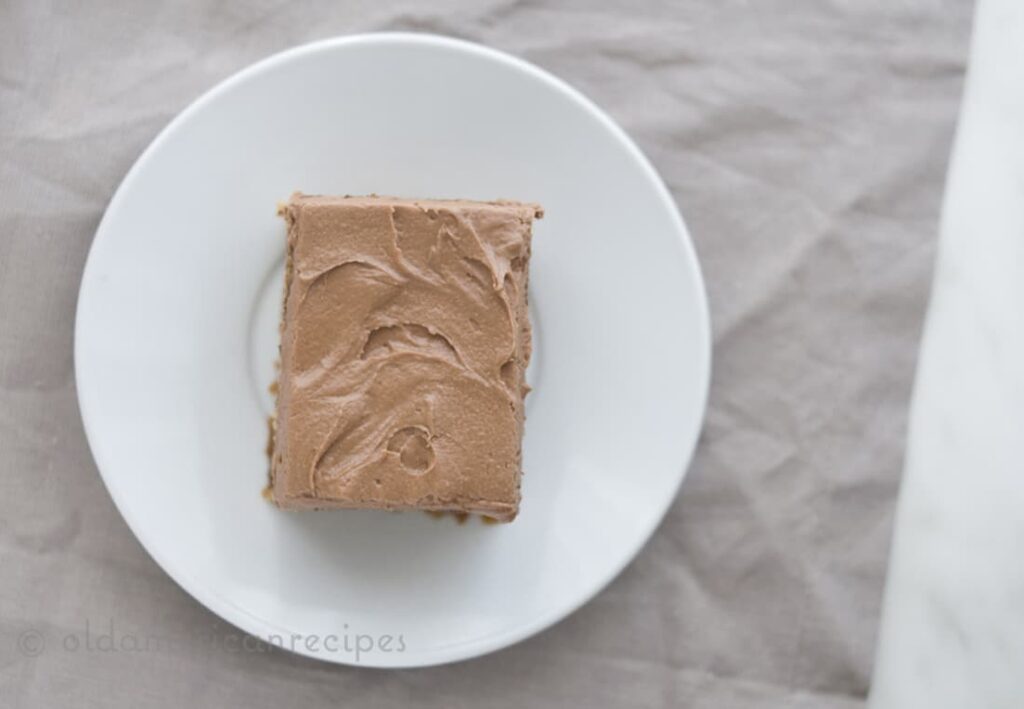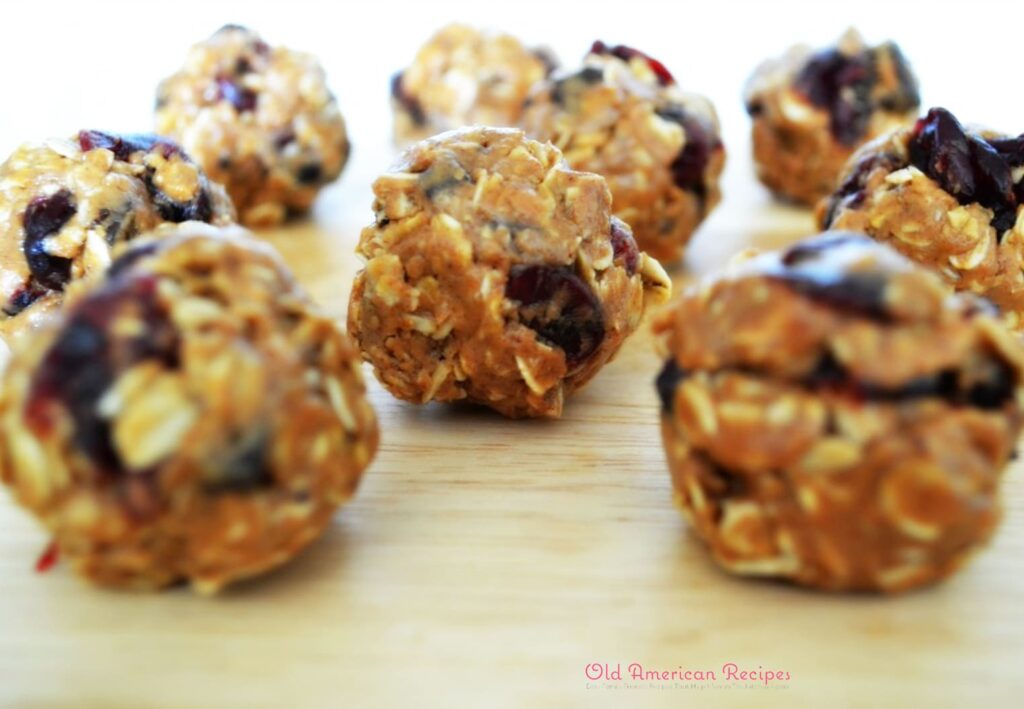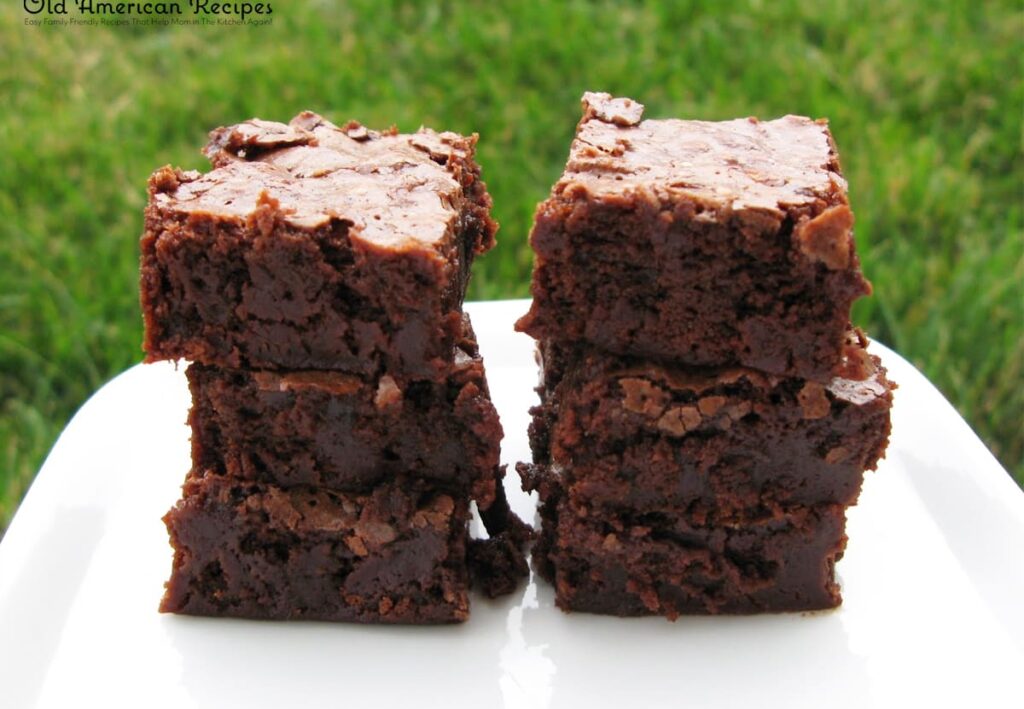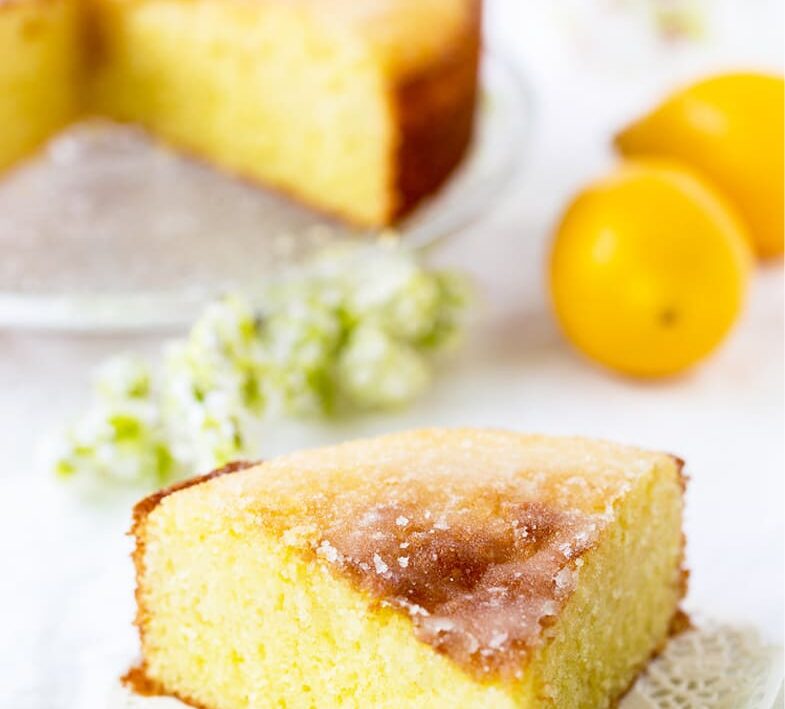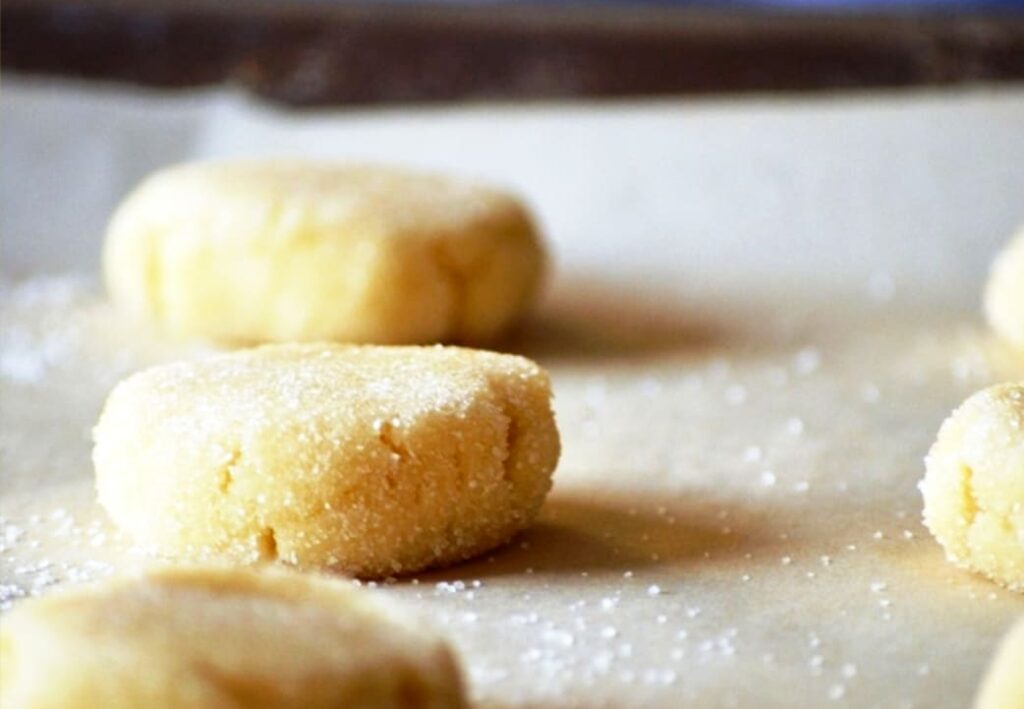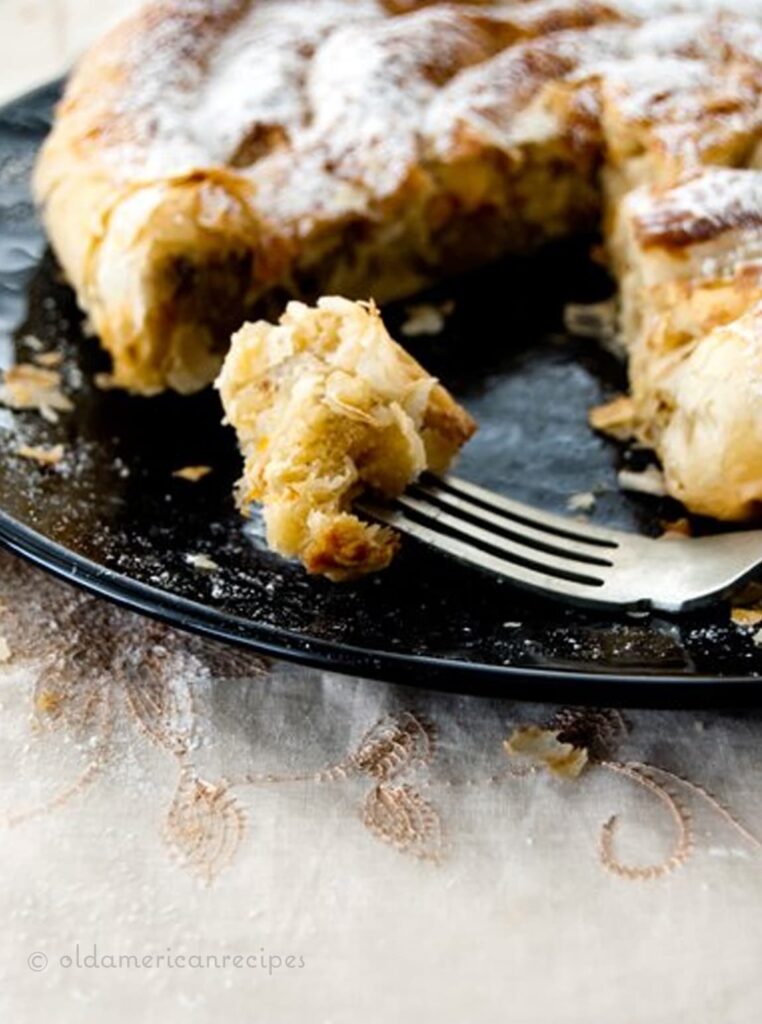
Moroccan cuisine is known for its rich flavors, exotic spices, and unique dishes. One of the most interesting desserts in Moroccan cuisine is M’hanncha, also known as Moroccan snake cake. This dessert is not only delicious but also has an intriguing name that piques the interest of many food lovers. In this article, we will explore the history, ingredients, and recipe for M’hanncha.
Table of Contents
History of M’hanncha
M’hanncha has a long history in Moroccan cuisine and is thought to have originated with the Berbers, an indigenous North African ethnic group. Berbers used to roll up thin layers of a fine ‘Warqa’ pastry with a sweetened filling made from fruits and nuts. Warqa pastry is similar to filo pastry and is believed to have originated in the kitchens of the Topkapi Palace during the Ottoman Empire. The pastry is a combination of Berber and Arab influences drawn from its Persian heritage. The Persians learned the art of making thin pastry from the Chinese, and Moroccan Warqa is actually made in the same way as Chinese spring roll skins.
Quite some years ago, I made a list of all the new places around the world I would like to explore. But somehow, despite having travelled fairly extensively in my younger years, the list was visibly much longer than that of the countries I had already seen.
Hmmmmm, a bit of a predicament!
Now, as time is gently ticking away (and yes, it is), I know I must get serious about my exploration list. Unless there is some sort of cash windfall in my future, I have serious reservations that I will accomplish a visit to all the desired countries on my original list (FYI, over 50!).
So I decided to do something extreme. I set myself the goal to reduce the list to my absolute, critical and most essential must visit destinations. I limited the list to … dare I admit … only five countries.
Do you know how hard that was? I mean, it is simple to create a long, extensive, and a nothing-gets-left-out list. But a brief, short, you really-have-to-think-about-it one?

After much deliberation though, I am happy with the final outcome – and, of course, looking forward to future travel plans!
Morocco will be one of the countries I visit.
Although Mr Mélanger has already been to this popular North African destination, he is more than happy to travel there again, with me. Together, I hope we share one of these sweet M’hanncha delights from a local vendor – along with a range of other traditional Moroccan desserts, cookies, pastries and sweets!
Details of Recipe: M’hanncha – Moroccan snake cake
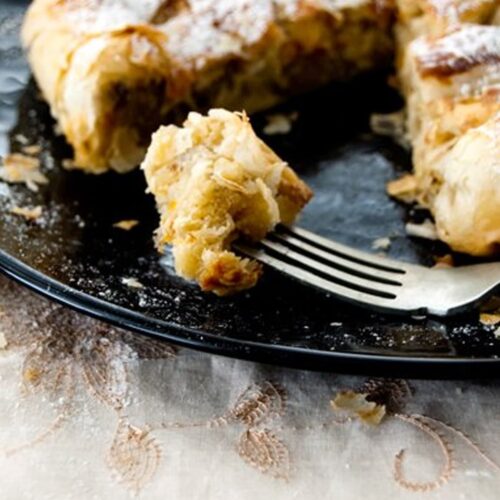
M’hanncha – Moroccan snake cake
Ingredients
- 150 g ground almonds
- 50 g pistachios roughly ground
- 125 g icing/confectioners’ sugar
- 1 tablespoon of plain flour
- Zest of 1 lemon
- Zest of 1 orange
- 1 tablespoon rose water
- 90 g unsalted butter
- 8 sheets of filo pastry
- 1 egg
- Pinch of cinnamon
- Icing/ confectioners’ sugar to serve
Instructions
- Preheat oven to 180C/350F.
- Lightly butter a 20 cm/8 inch springform pan.
- Set aside.
- Separate the egg and place the egg white in a large bowl, and put the egg yolk aside for the end of the preparation. Gently whisk the egg white, and then add the almonds, pistachios, icing sugar, flour, zests, and rosewater.
- Mix to a paste.
- Divide the mixture into 8 equal portions (around 50g each).
- Roll each into a sausage shape about 20 cm in length.
- Remove one sheet of filo pastry from your pile (keeping the remaining pastry covered with a clean tea towel), and place the sheet with the long side towards you.
- Gently brush butter over the pastry and place another sheet on top, also brushing the top with butter.
- Place two of your almond ‘sausages’ side by side at the front of the pastry leaving a gap of around 2 to 3 centimetres around the edges (sides and front).
- Roll up to enclose the filling. Form into a coil and sit the coil, seam side down, in the centre of the tin, tucking under the unfilled ends of the pastry to enclose the filling.
- Continue in this manner to make three more pastry ‘snakes’ shaping each around the smaller coil to make a large coil.
- If the coil breaks, cut small pieces of some extra filo, brush with a little egg yolk and press the filo onto the breaks.
- Add the cinnamon to the remaining egg yolk and brush over the coil.
- Bake for 25-30 minutes or until golden brown. Dust with icing sugar.
- Serve with cream, ice-cream or a date sauce!
Don’t forget to PIN this Mhanncha – Moroccan snake cake

if you enjoyed making the Moroccan Snake Cake (M’hanncha) and want to try a different recipe, you can explore many options online. Epicurious is a popular website that offers a wide range of recipes and variations for desserts and other dishes. You can find a different recipe for M’hanncha, or try out other unique cake recipes, such as the Almond and Cottage Cheese Cake.
FAQs: M’hanncha – Moroccan snake cake
- What is M’hanncha? M’hanncha is a traditional Moroccan dessert that is made by layering fine filo pastry and filling it with a mixture of almonds, pistachios, sugar, cinnamon, and orange blossom water. The pastry is then rolled into a spiral shape to resemble a coiled snake and baked until golden brown. Finally, the pastry is drizzled with a sweet syrup made from honey and orange blossom water.
- What is the origin of M’hanncha? The origins of M’hanncha can be traced back to the Berbers, an indigenous North African ethnic group. Berbers used to roll up thin layers of a fine ‘Warqa’ pastry with a sweetened filling made from fruits and nuts. Warqa pastry is similar to filo pastry and is believed to have originated in the kitchens of the Topkapi Palace during the Ottoman Empire. The pastry is a combination of Berber and Arab influences drawn from its Persian heritage.
- What are the ingredients of M’hanncha? The main ingredients of M’hanncha include filo pastry, almonds, pistachios, sugar, cinnamon, orange blossom water, butter, and honey.
- Is M’hanncha difficult to make? Making M’hanncha at home is not difficult, but it does require some patience and skill. The process of rolling the filo pastry into a spiral shape can be challenging for beginners.
- What is the best way to serve M’hanncha? M’hanncha is traditionally served warm with a cup of mint tea. However, it can also be served cold as a dessert or a sweet snack.
- Can I substitute the almonds and pistachios with other nuts? Yes, you can substitute the almonds and pistachios with other nuts, such as walnuts or cashews, depending on your preference.

